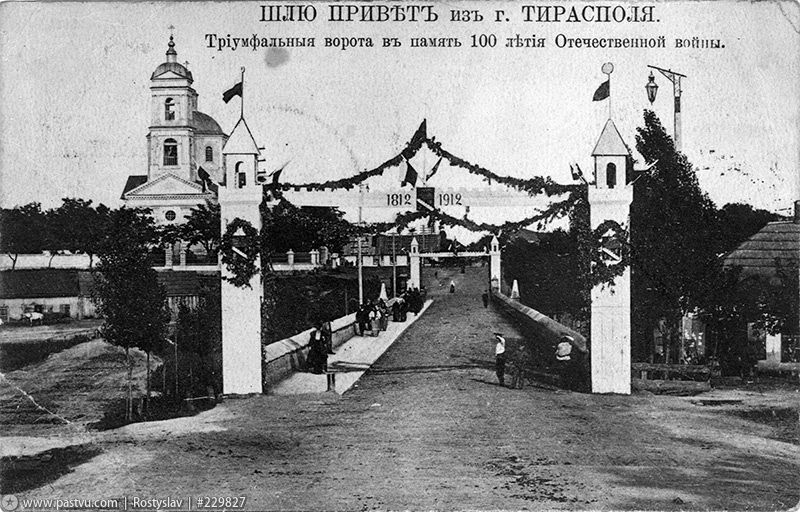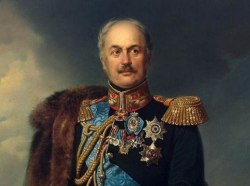Оn the Holy Virgin’s Protection Feast Day Tiraspol celebrates its’ City Day. The Church of the Intercession was founded in 1798. It’s one of the first churches in the city on the Dniester. In 1998 it was decided to celebrate the Day of Tiraspol on the Feast of Pokrov (on October 14). However, other important historical dates also can be associated with the city’s birthday.
First important date in the Tiraspol’s history could be September 21st, 1792, when Governor of the Ekaterinoslav Vasily Kakhovsky in a letter to Catherine II suggested to build a country town at the planned the Sredinnaya fortress at the confluence of the Dniester and Botna rivers. We had discussed this episode in one of the previous texts of the Special Project “Milestones of time.” By the way, it was from 1792 the history of Tiraspol began.
The foundation stone of the fortress was laid on June 22 (July 3), 1793. From its very birth, Tiraspol was founded as a military stronghold in the south-west of Russia.
Here we had described design of the fortress by how the engineer Franz De Volan and construction of the fortress under the management of Alexander Suvorov.
The status of the Сenter
The city near fortress named Tiraspol was first mentioned on January 27 (February 7), 1795 in the Decree of Catherine II on the establishment of the Voznesenskaya province. In the third paragraph of this Decree we read: “We order the Vicegerency to be divided into 12 uyezds, in which districts and country towns are assigned to be (...). Tiraspol at the middle fortress opposite to mouth of the Botna river.”
According to this Decree, such cities as Odessa, Balta, Dubossary, Ovidiopol, and Grigoriopol were also assigned to the Tiraspol uyezd. Therefore, from the beginning of its foundation, the city has been the administrative center of a vast area. In the future, in the 20th century, the city will be the capital of two Pridnestrovian republics: firstly, of the MASSR, and later of the PMR.
Mixing of cultures and ancient tradition
The author of the book “Tiraspol. On the verge of centuries” Vladimir Polushin noted, that in 1795, there were 2,448 inhabitants in Tiraspol. Even at that time city’s population distinguished by its ethnic diversity: there were 58.5% of Russians, Jews – 15.8%, Ukrainians – 12.1%, Moldovans – 2.5%, other nationalities – 11.1%.
The very word “Tiraspol” is translated from Ancient Greek as “city on the Dniester”. In ancient times the Dniester was called as Tiras. The name of the new city is associated with the “Greek project” of Catherine II and the popular ancient tradition at the end of the 18th century. Greek names were given to new cities in the newly acquired lands of the Ochakov: Grigoriopol, Ovidiopol, Odessa. Thereby, Russia revived ancient history, when the Greek city-states developed in the Northern Black Sea region – Tyra, Olvia, Khersones.
“New Russia Sybarite”
Pavel Ivanovich Sumarokov, a member of the Russian Academy of Sciences wrote about Tiraspol as a “city of freedom”. His book “Traveling all over the Crimea and Bessarabia in 1799” was published in 1800: “This new city is built according to the plan with wide streets and consists of 350 courtyards. Its inhabitants are: Russians Old Believers, Little Russians, Moldovans, Walokhs, Jews and Tzigane. A mile away from it, a large earthen fortress with a strong garrison take place. It protects our boundary and doesn’t allow anyone to swim across more than half of the river.”
According to Sumarokov, at the end of the 18th century in Tiraspol numbered barely 200 houses. Only a few of them were stone.
Almost twenty years later (in 1846), а reporter from the magazine “Illustration” visited the city. He called Tiraspol, a “New Russia Sybarite, either constantly basking in the shade of gardens or in the scented wilderness of blooming forests”: “Generally, Tiraspol is pretty good for a small town in the southern part of Russia: it has two Schismatic Churches, one the so-called chantries, and one Orthodox Church; there are a lot of fair stone buildings, which were built by the officers of the artillery parks and siege artillery, standing here constantly; finally, there are a lot of government buildings. As is well known, that’s what’s garnishes Russian cities.”
The reporter describes what streets of Tiraspol were covered with at that time. He also tells about the city’s signature dish: “All the streets, especially around the bazaar, are covered with something black; I was trying to figure out what it can be, for a long time. Finally, I learned, that this mound is nothing, but a husk of water chestnuts, growing in the Dniester, (…) they say, in local decent houses can make excellent sauce, cooking these nuts in butter.
Fire and epidemic
However, there are tragic pages in the early history of Tiraspol.
In April 1818, a large-scale fire took place in the city. According to the documents, which Vladimir Polushin applied, more than a half of the buildings burned down.
The fire was so devastating, that Russian Emperor Alexander I intervened in the matter. The Tsar personally visited Tiraspol and ordered to give everyone whose house was ravaged by fire, a zero-interest loan for 12 years to restore their buildings. The total amount was 350 thousand rubles (about 200 million in today’s money). Later, the payment of the loan was postponed for 24 years, then Emperor Nicholas I forgave a half of the borrowed money.
Tiraspol also withstood a difficult period of cholera epidemic. In 1831 she claimed the lives of over 1,000 city residents. In next texts we will describe more details of these event.
On the verge of a new era
By the middle of the 19th century, Tiraspol became a well-developed city. According to the “List of populated areas in the period of 1859”, published by the Central Statistical Committee of the Ministry of Internal Affairs, at that time, 9273 people lived in the city. In terms of population, it was the sixth city of the Kherson province out of eighteen settlements that had the status of a city at that time. In terms of population, Tiraspol was inferior to Odessa, Nikolaev, Kherson, Elizavetgrad (later Kirovograd, and now Krapivnitsky) and a little bit to Alexandria.
The same statistical book indicates that at that time in Tiraspol, together with the surrounded villages of Tiraspol Blizhny (now the village of Blizhny Khutor of the Slobodzey region) and Ermishkin (was in the Kolkotovaya Balka region – the current Oktyabrsky microdistrict) there were 1,085 courtyards, an uyezd school, an alms-house, a hospital, post station, bunder and 14 factories.
In 1867 a new impulsion to the development of Tiraspol became the opening of a railway connection with Odessa. This attribute, complete with the developing river shipping company, led to rapid economic development: Tiraspol became a large grain hub in the south of Russia. In next texts we will describe more details of these events.








